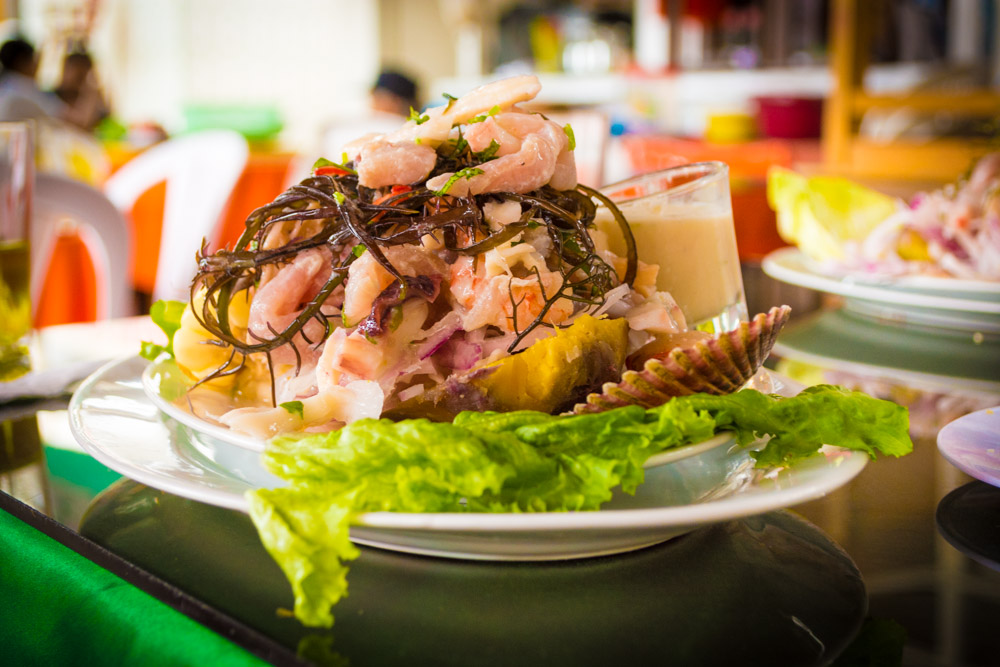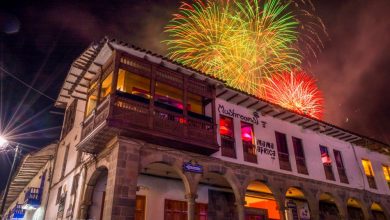Ceviche Varies Among Establishments and Regions

Peruvian Ceviche (Walter Coraza Morveli)
In Peru our ceviches vary by region. In Cusco you will find it present every day in our markets, our cevicherías, and in ceviche carts from first thing in the morning until about 1 pm.
In Peru you find a great diversity of products to add to the basics of ceviche according to the taste of diners wherever you are.
In the Imperial City, our ceviche is made from jurel (mackerel), onion, fired rice, toasted corn, lettuce, and boiled sweet potatoes. All of these are served on the plate, but in small portions. Lime juice, combined with the onion and the raw fish give the dish a color and taste that is particular to our region. You also get, as a courtesy, a chilcano that is a concentrated soup from fishheads. It is served hot with a little bit of the juice from the ceviche. It is ideal for moments of rain and for cold days.

In the popular market of Rosaspata you will find the casera (vendor) Alicia. She has her stand inside the market and every day attends from 6 am until approximately 1 or 2 in the afternoon. She sells a dish of ceviche for 5/S, 7/S, and 10/S. All of them include a complimentary chilcano. She also wills ell you chilcano alone for 3 /S or a simple one for 2.50/S. The only difference is the size of the dish and the quantity of soup. I love to have a hot chilcano in the mornings. Whenever I arrive at her stand it is filled with clients. Each waits anxiously for the attentions of the casera according to when they arrived.
The last time I visited the capital of Peru, Lima, I arrived with expectations of eating a dish of ceviche from the sarts that are found outside the popular markets. I already had the chance to try a ceviche in Lima many times. Though I am back in Cusco, I cannot forget the taste of the ceviche I ate at one of the carts in Surquillo, a district of Lima.
There was a sign that had the name of the cook, Don Fausto. They offered a mixed cebiche, a cebiche of black clams, and cebiche from fish. (In Lima they prefer to spell ceviche with a b, cebiche. ) The price varied according to size. Don fausto offered plates at 7 /S, 10/S and 14/S. The dish contained fresh fish and / or sea food, onion, sweet potato, boiled corn, lettuce, and chicharrón de calamari (deep fried breaded squid). The dishes juice was fresh and had a rich flavor. How could I forget the fish that easily dissolved in my mouth and with the rest of the ingredients made a complex set of flavors that struck me as unique. On the plate it was an exciting fiesta of color on the plate and filled with flavor.
We eat ceviche cold. Every region has its own traditions and styles of presenting ceviche. It and its prices also vary by establishment. In restaurants it costs more and from the carts and markets it costs less. There is not a rigid rule for ceviche. Cuisine is creation and love for the palate and soul.





